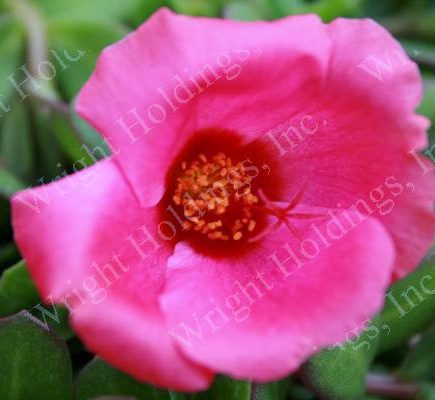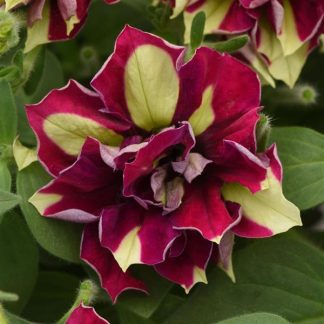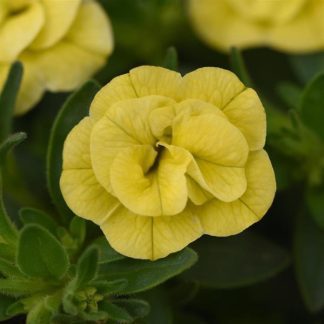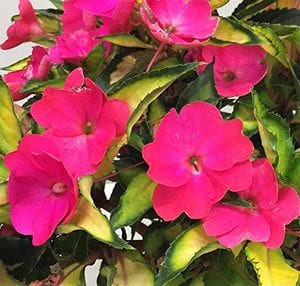Description
Purslane ‘Hot Pink’: A Dazzling Groundcover That Loves Life in the Sun
Welcome to the World of ‘Hot Pink’
We all look for plants that make us smile the moment we step outside. Purslane ‘Hot Pink’ does that and more. The petals glow in vivid neon, almost as if they are lit from within. Each bloom opens wide to greet the morning, then folds gently as dusk falls. Yet the plant asks for very little in return. You give it warmth, sun, and a light touch of water, and it rewards you with color that never quits. In other words, it is pure garden joy.
A Quick Botanical Background
Purslane (Portulaca oleracea var. sativa) is a succulent groundcover native to dry, hot regions around the globe. Over time, breeders selected plants with ever-brighter petals. ‘Hot Pink’ is the star of that quest. It keeps the low, trailing habit of its ancestors but turns up the color dial. Stems sprawl 6–10 inches tall and can spread more than a foot. Leaves are paddle-shaped and store moisture, making the whole plant drought-tough.
Why Choose ‘Hot Pink’?
- Intense Color: The magenta-pink petals carry a dazzling glow that stands out even in full sun.
- Long Bloom Season: Flowers burst open from late spring until the first hard frost. We’re talking five-plus months of nonstop cheer.
- Heat and Drought Tolerance: The thicker leaves lock in moisture, so the plant thrives where many others wilt.
- Pollinator Appeal: Bees, hoverflies, and butterflies drop in for the nectar buffet.
- Low Maintenance: No deadheading needed. Spent blooms drop away on their own.
In short, this is the kind of plant that helps you win back your weekends.
Best Places to Plant
You and I can tuck ‘Hot Pink’ almost anywhere the sun shines for at least six hours:
- Rock Gardens: It flows over boulders like living paint.
- Container Edges: Use it as a living fringe that drapes from pots, window boxes, or hanging baskets.
- Pathway Borders: Soft stems spill across stone without causing a trip hazard.
- Roof Gardens and Green Roofs: Light weight and shallow roots make it perfect up high.
- Sunny Slopes: Roots knit into the soil and fight erosion.
Soil and Potting Mix
Purslane asks for fast drainage above all else. Here is a simple recipe:
- 1 part potting soil
- 1 part coarse sand or perlite
- 1 part fine gravel or poultry grit
Blend well. The mix should crumble when squeezed. If it clumps, add more grit. For in-ground beds, loosen soil 8 inches deep and fold in sand until you feel a light texture.
Sunlight and Temperature Needs
‘Hot Pink’ loves heat. Daytime temperatures of 75–95 °F (24–35 °C) bring out the richest color. Nighttime dips to 60 °F (16 °C) are fine. In cooler zones, wait until soil stays above 65 °F (18 °C) before planting. Choose a spot with direct sun from dawn to late afternoon. Too much shade leads to floppy stems and fewer blooms.
Watering Wisdom
Think “soak, dry, repeat.” Follow these steps:
- Water deeply after planting.
- Let the top inch of soil turn bone-dry.
- Water again, but avoid overhead spray—splashing can spot the petals.
- In containers, lift the pot. If it feels light, it’s time to water.
During heat waves, plants in the ground may survive on rainfall alone. Pots may need a drink every two or three days, but always check first; over-watering is the only reliable way to hurt this plant.
Fertilizing for Continuous Bloom
Purslane grows in poor soils back home, so we take it easy here too. Mix a slow-release, balanced granular fertilizer (for example, 10-10-10) into the soil at half the rate listed on the bag at planting time. That’s usually enough for the whole season. If leaves look pale in mid-summer, give a light liquid feed at quarter strength. We feed just to keep energy stores up, not to force lush growth.
Pruning and Grooming
Trim? Rarely. Still, we can shape plants if stems reach farther than we like:
- Snip back by one-third using clean scissors.
- New branches sprout quickly, making a denser mat.
- Remove any yellowed leaves to discourage mildew.
Spent blooms naturally twist off in the wind, so no deadheading marathon here.
Propagation Made Simple
Want more? Let’s multiply:
Seed
- Collect dry seed pods in autumn.
- Store in a paper envelope in a cool, dry place.
- Sow indoors six weeks before last frost or direct-sow after frost danger passes.
Stem Cuttings
- Clip 3-inch tips from healthy stems.
- Allow cuts to dry one day so they callus.
- Insert into moist, sandy mix.
- Roots appear in one week.
Division
Older mats break apart easily. Lift a clump, pull sections apart, and replant.
Common Pests and Problems
- Aphids: Blast with a firm water spray or use insecticidal soap.
- Mealybugs: Dab with alcohol-soaked cotton swab.
- Root Rot: Signs include mushy stems and sour smell. Pull affected plants, loosen soil, and improve drainage.
- Powdery Mildew: Rare, but may appear in humid shade. Increase air flow and remove infected leaves.
Most of all, remember that healthy, dry, sun-loving plants resist trouble on their own.
Companion Planting and Design Ideas
Pair ‘Hot Pink’ with plants that share its thirst for sunshine and dislike of soggy feet:
- Dusty Miller: Silvery foliage sets off hot pink blooms.
- Sedum ‘Angelina’: Golden needles create a bright base layer.
- Thyme or Oregano: Edible herbs supply scent and texture contrast.
- Ornamental Grasses: Blue fescue adds cool tone and vertical sway.
In mixed containers, place ‘Hot Pink’ near the rim so vines cascade. Cluster three or five plants together for a bolder splash.
Seasonal Care Calendar
| Season | Task | Notes |
|---|---|---|
| Early Spring | Start seeds indoors or prep cuttings | Provide heat mat for quick germination |
| Late Spring | Transplant outside | Harden off for one week |
| Summer | Water, light feed, trim lightly | Check pots every two days in heat |
| Autumn | Collect seeds, take cuttings | Overwinter cuttings on sunny windowsill |
| Winter (mild zones) | Mulch lightly, reduce water | Plants may stay evergreen in zone 9+ |
Harvest and Edible Uses
Surprise! Purslane is not only pretty. The leaves carry a mild lemony snap and are packed with omega-3 fatty acids. To harvest:
- Snip young tips before flowers open.
- Rinse quickly to remove grit.
- Toss into salads, stir-fries, or green smoothies.
- For pickles, blanch stems for 30 seconds, then jar with brine.
We eat only plants grown without chemical sprays. Taste is best in the cool morning.
Sustainability Spotlight
‘Hot Pink’ fits beautifully into eco-friendly gardening. It drinks far less water than turfgrass, invites pollinators, and thrives in lean soils—no heavy fertilizer runoff. You and I can even root cuttings to share with neighbors, shrinking the carbon footprint tied to shipping new plants. A living example of beauty meeting stewardship.
Community Stories
Last summer, our neighborhood filled sidewalk planters with ‘Hot Pink’ and white alyssum. Children counted butterflies while bike riding, and older gardeners traded seed pods at season’s end. The project proved one small idea can color an entire block—and connect people who might otherwise stay strangers. We hope you’ll start your own story soon.
Troubleshooting at a Glance
| Symptom | Likely Cause | Quick Fix |
|---|---|---|
| Leaves shrivel, stems limp | Under-watering | Deep soak, then mulched surface |
| Leaves yellow, growth weak | Over-watering or poor drainage | Cut water, add grit, raise pot |
| Few blooms | Not enough sun or excess nitrogen | Move to sunny spot, stop feeding |
| White powder on leaves | Humid shade, mildew | Increase spacing, remove affected parts |
How to Care for ‘Hot Pink’—Step-by-Step
- Plant at the Right Time: When night temps stay above 60 °F (16 °C).
- Choose Fast-Draining Soil: Blend potting mix with sand and grit.
- Give Full Sun: Six hours minimum; eight is ideal.
- Water Smart: Soak soil, let top inch dry, repeat.
- Feed Lightly: Half-rate slow-release granules once each season.
- Trim Gently: Snip wayward stems; spent blooms self-clean.
- Watch for Pests: Treat early with water spray or mild soap.
- Propagate: Save seeds or root cuttings to share.
Follow these steps, and you’ll enjoy a carpet of glowing pink until frost.
Growing ‘Hot Pink’ in Containers
- Pot Size: 10-inch diameter minimum for each plant.
- Material: Terracotta breathes; plastic retains moisture longer—pick what suits your watering habits.
- Drainage Holes: Always. No exceptions.
- Placement: Elevate on pot feet or bricks to keep air flowing beneath.
- Overwintering: Move pots indoors before first frost, place under bright light, and water sparingly. The plant may slow down but often resumes in spring.
Kids in the Garden
Children adore the bright blooms and thick leaves. Invite them to:
- Count how many flowers open each morning.
- Make “rainbow pots” by pairing ‘Hot Pink’ with yellow and orange purslane cousins.
- Track visiting pollinators in a notebook.
- Root stem cuttings in clear cups to watch roots form.
Simple projects spark curiosity and teach responsibility, all while painting the garden with color.
Design Templates You Can Try
Sunny Step-Stone Walk
- Plant thyme between stones.
- Add ‘Hot Pink’ along each edge.
- Accent with small boulders.
Balcony Bliss Basket
- Center: Spiky blue fescue.
- Middle ring: White lantana.
- Outer spill: ‘Hot Pink’ purslane.
Xeriscape Corner
- Background: Agave or yucca.
- Mid-zone: Golden barrel cactus.
- Foreground carpet: Sweeps of ‘Hot Pink’.
Feel free to mix, match, and make the plan your own.
Frequently Asked Questions
Does purslane self-seed?
Yes, but lightly. Seedlings are easy to spot and lift if you wish.
Is it invasive?
No. The cultivated forms stay where you plant them, especially in cool winters.
Can I grow it indoors?
Only on the sunniest south-facing sill or under grow lights that run 14 hours.
Is it safe for pets?
In moderation, yes. Leaves are non-toxic, though too much can cause mild stomach upset.
Light, Color, and Joy—Let’s Grow it Together
‘Hot Pink’ purslane proves that gardening success doesn’t need to be complicated. We choose the sunniest spot, respect the plant’s love of dry feet, and watch as neon petals unfold day after day. Along the way we feed pollinators, brighten dull corners, and share cuttings with friends. May your garden floor gleam with rosy light all season, inviting every passerby to linger, smile, and ask, “What is that stunning groundcover?”




